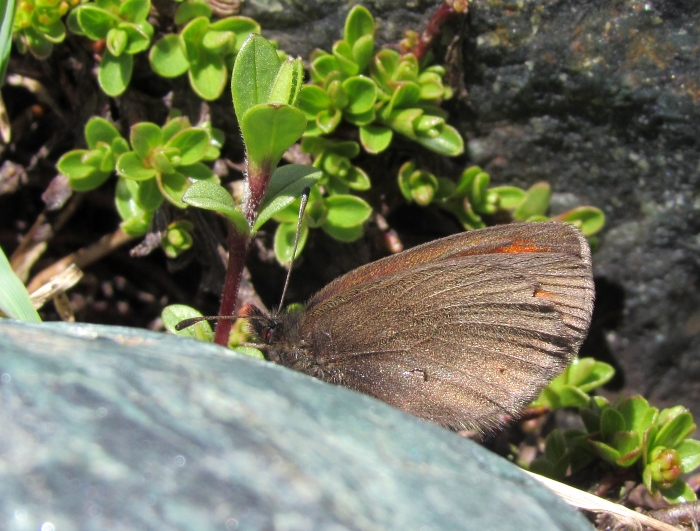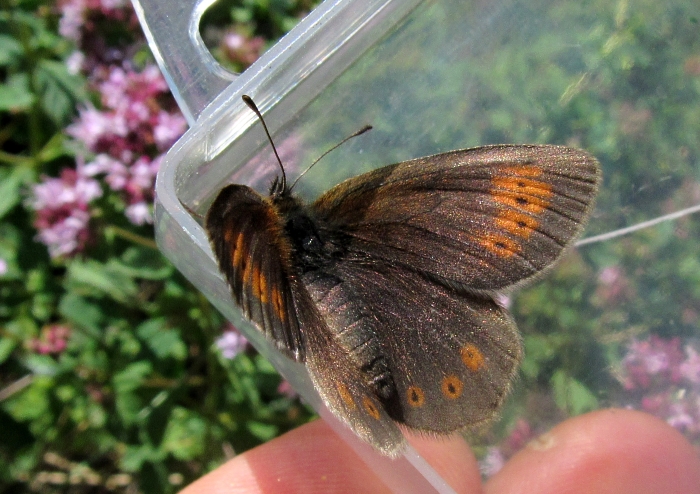
Male, Switzerland, July 2019

Female, Switzerland, June 2017

Female, Switzerland, August 2016

Female, Switzerland, June 2017

Female, Switzerland, June 2017

Male (I think), Switzerland, August 2016

Male (I believe), Switzerland, July 2015 - I netted it because I had
hoped it was Rätzer's ringlet,
Erebia
christi

Underside of the same individual (I believe), Switzerland,
July 2015

Val d'Aran, July 2007

Switzerland, July 2011

Val d'Aran, July 2011

Switzerland, July 2014

Switzerland, July 2011

Switzerland, July 2007

July 2001, Val d'Aran

Distribution
This is a
common species of high mountains in Europe, where it flies over grassy
flowery slopes, typically above 2000m but much lower in places - in
Scotland and northern England for example, where there aren't any
mountains that high! Unlike many of its cogeners, it doesn't come
readily to sweat and clothing, and I have never seen it at minerals
with other Erebia
species. Normally, I encounter it while looking for rarer things and I
haven't given it the time it deserves, nor really have any decent
pictures of it.
The small mountain ringlet
(that is the
traditional English name, though modern books tend to call it the
mountain ringlet) is a very variable butterfly, with a great number of
named forms and subspecies. Somehow, however, it is always
recognisable. Points to note are the rather irregular red bands
(occasionally broken into spots) the usually blind ocelli (sometimes
with tiny, white pupils), the largely unmarked and often greyish
underside hindwing, with obscure or absent post-discal spots, and the
very slight protuberance of the hindwing at v.5. It is one of the
smaller ringlets, comparable in size to the blind and lesser mountain
ringlets.
The main foodplant is matgrass but it will take other grasses too. At
higher altitudes the caterpillars hibernate twice, taking two seasonal
cycles to reach adulthood, but at lower altitudes they accomplish this
in a single year.














